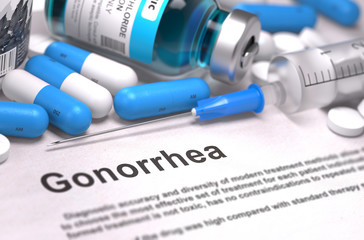Sexually transmitted diseases (STDs) are infections that are spread from one person to another, usually during vaginal, anal, and oral sex. They’re really common, and lots of people who have them don’t have any symptoms. Without treatment, STDs can lead to serious health problems. But the good news is that getting tested is no big deal, and most STDs are easy to treat.
Millions of new infections occur every year. According to the CDC, the rate of infection among women increased 172.7%, from 1.1 to 3.0 cases per 100,000 females . During A four year period, the rate among reproductive-aged women (women aged 15–44 years) increased 165.4%, from 2.6 to 6.9 cases per 100,000 females aged 15–44 year.
Why are women more affected by STDs?
Complications of sexually transmitted infections disproportionately affect women of all ages, with important implications for women of reproductive age. Undiagnosed and untreated STDs can lead to pelvic inflammatory disease (PID), ectopic pregnancy, as well as adverse fetal and neonatal outcomes. STD-related morbidity disproportionately occurs in women for a number of reasons. Women are biologically more susceptible than men to the acquisition of some STDs and more likely to suffer from complications. It is also important to note that STDs are often asymptomatic in women, delaying diagnosis and treatment until there is a symptomatic complication.
A female’s sexual and reproductive health can also be interrelated to her particular social, cultural, and economic environment, creating conditions for risky sexual behaviors. Several factors, including the use of alcohol or recreational drugs inhibiting the ability to negotiate safer sexual practices, diminished gender power, high-levels of concurrency, poverty, homelessness or unstable housing, and partner violence may contribute to the challenges women face in protecting their sexual well-being.1-5 In some circumstances, maintaining the relationship with a partner may take a higher priority than STD risk reduction, affecting her reproductive health, as well as the health of her unborn baby. A woman can also be placed at risk for STDs through her partner’s sexual encounter with an infected partner. Consequently, even a
What are the Common Types of venereal Diseases or VD?
STD symptoms vary with the disease, the common symptoms based on disease are listed below:
Syphilis is a very contagious venereal disease caused by Treponema pallidum. The disease spreads as a result of direct contact with syphilis sore during oral sex, anal sex or vaginal sex. The progression of the disease occurs in four stages , the 4 stages of syphilis are: primary, secondary, latent, and tertiary stages. Each stage of the disease comes with its own distinct symptoms. Syphilis was once regarded as a major public health challenge because of its tendency to cause major health complications if left untreated. There are several risk factors that expose an individual to the development of this venereal disease. Individuals that are sexually active or individuals whose sexual partner has tested positive for syphilis or HIV are at a very high risk of contracting the disease. In addition, having multiple sexual partners significantly increases the risk of contracting syphilis.
Gonorrhea is another venereal disease that is of significant public health importance. This venereal disease is caused by Neisseria gonorrhoeae also known as gonococcus. Transmission is as a result of direct contact of genitals with penile or vaginal discharge containing the microorganism during intercourse or other sexual activities.Globally, Gonorrhea affects about 0.6% of men and 0.8% of women and can result in serious medical complications if not properly treated or if left untreated. Treatment with Gonorrhea shot containing Ceftriaxone is the commonest form of treatment.
Major Complications of Untreated Gonorrhea in Men
A poorly treated or an untreated gonorrhea infection in men can result in several complications which include;
- Disseminated Gonococcal infection
- Prostatis ( inflammation of the prostate)
- Epididymitis ( inflammation and infection of the epididymis)
Note: A disseminated gonococcal infection due to Neisseria gonorrhoeae can result in endocarditis, Sepsis, cellulitis, and meningitis.
Major Complications of Untreated Gonorrhea In women
A poorly treated or an untreated gonorrhea infection in women can result in several complications which include;
- Reproductive system related complications such as infertility and ectopic (tubal) pregnancy.
- Chronic pelvic pain and
- Inflammation of the bartholin glands
- Fitz-Hugh-Curtis syndrome is a rare complication
Major Complications During pregnancy
A poorly treated or an untreated gonorrhea infection before or during pregnancy can result in several complications . which include;
- Endometritis or infection of the lining of the uterus
- Increased risk of miscarriage
- Increase risk of preterm labor; The woman may be given medicines to prevent premature birth, which could require a stay in the hospital
- Premature rupture of the membranes (PROM).
Major Complications in Newborns
A poorly treated or untreated gonorrhea infection during pregnancy can result in several health challenges for the newborn these include;
- Sepsis
- Neonatal meningitis
- Conjunctivitis (Ophthalmia Neonatorum)
Symptoms of Gonorrhea
- Painful urination and burning sensation
- Yellow-white, or green-white discharge from the opening of penis
- Pain in the scrotum or Itchy genitals
READ: GONORRHEA AND SEXUALLY ACTIVE MEN AND WOMEN
Genital herpes is a venereal disease (VD) caused by two types of viruses (herpes simplex type 1 and herpes simplex type 2). The disease is contracted during sexual activity with an infected individual (vaginal, anal, or oral sex).An individual become infected as a result of coming in contact with body fluids containing the virus from an infected person. The asymptomatic (no symptoms) nature of this disease is one of the major factors responsible for the proliferation of this venereal disease. Most individuals carrying the virus are oblivious of its presence until major signs and symptoms start manifesting. Once the virus secure entry into the human body mostly via the skin, it migrates along nerve paths. In the nerve paths, it could either remain inactive (dormant) or become active from time to time leading to the manifestation of clinical symptoms in the infected individual.
Symptoms of Herpes
- Inflammation of the cervix and vaginal discharge in women.
- Burning or tingling sensations in the skin.
- Itching
- Painful blisters and/or ulcers in the genitals, rectum or mouth. CLICK HERE FOR COMPLETE INFORMATION ON GENITAL HERPES
Does STD Cause Cancer in Women?
STDs have been linked to various forms of cancer. A recent study published in the Cancer Journal for Clinicians has linked the development of cervical cancer to the previous infection with genital herpes. A further review of the data confirms the association between herpes viruses and cervical cancer. In men, genital herpes has also been linked to the development of cancer of the prostate. Studies have revealed that prostate cancer cells contain Herpes virus particles indicating a very strong link between prostate cancer and herpes infection in men.
Developing venereal diseases due to the presence of Human papillomavirus (HPV) can cause cancers of the throat, anus, and mouth. The infection also significantly increase the risk of cervical cancer in women and the development of penile cancers in men.
How to Prevent STDs
For most venereal diseases (VD) the safest and most effective method of prevention is abstinence from sex and faithfulness to a faithful sexual partner. This has been shown to significantly reduce the risk of contracting diseases related to sexual activity. Not all sexually transmitted diseases can be prevented with condoms. The use of condom in the prevention of some venereal diseases such as genital herpes has been shown to be largely ineffective in preventing the infection. This is because condoms only provide protective coverage for the penis leaving other parts of the body exposed to body fluids of an infected partner during sexual activity. In addition, the increased incidence of malfunctioning or broken condoms remains a huge concern.
Some available vaccines can reduce the risk of contracting certain venereal diseases such as some types of human papillomavirus (HPV) and hepatitis B. Individuals with multiple sexual can also reduce their risk of exposure to venereal disease causing microorganism by practicing safe sex.
An effective mechanism that has been proven to help in the prevention of venereal disease is the Partner Notification Drive (PND). It involves encouraging individuals who have tested positive for an STI, to inform their sex partners including partners he/ she has had sexual relationships with over the last three months to one year. This system, (confidential partner notification scheme) has been effective in preventing the spread of sexually transmitted diseases (STDs) especially HIV /AIDS in most developing countries where the disease remains a serious public health challenge.







3 Comments